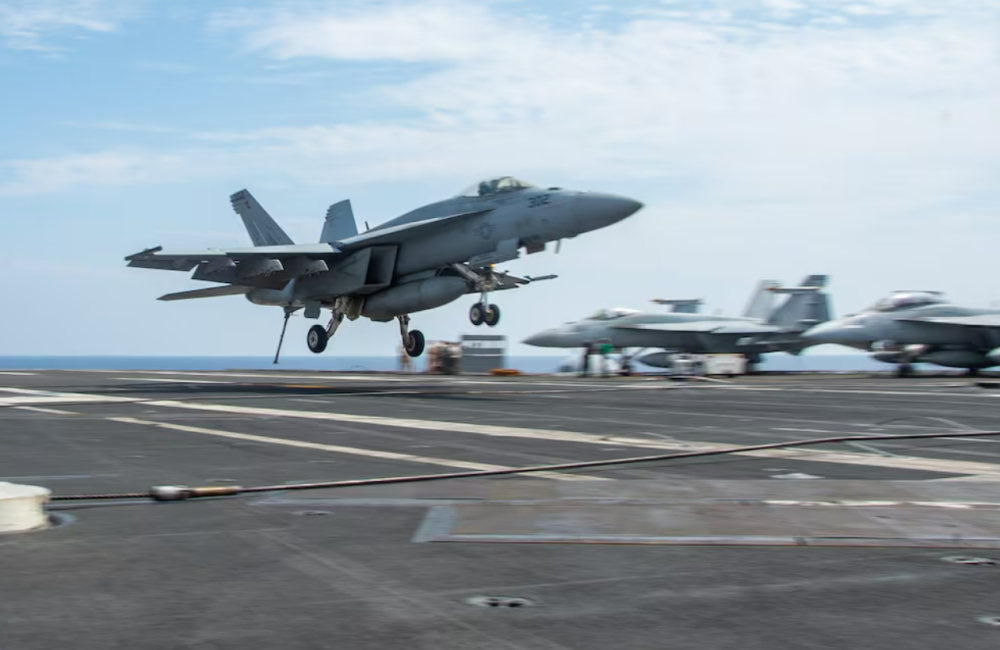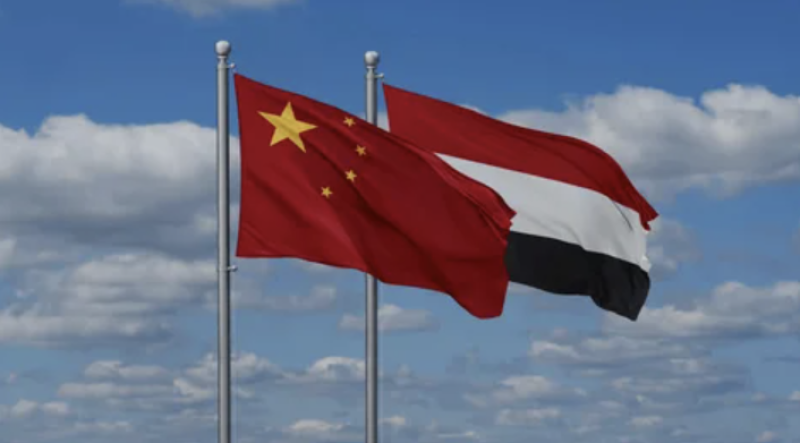Coalition campaign against Houthi rebels in Yemen shows limits of air power


Since November, the Houthi rebels in Yemen have managed to shut down most commercial shipping in the Red Sea, which is normally a conduit for about 12 per cent of global seaborne trade.
The militants have launched dozens of ballistic missiles and cruise missiles at ships, as well as hundreds of drones, as part of their pressure campaign over Israel’s war in Gaza.
The Iran-backed Houthis support Hamas and say they will not stop the attacks until Israel withdraws its troops from the Palestinian enclave.
Recently, the Yemeni group has claimed to possess the ability to repurpose Iran’s Ghadr missile into an anti-ship role. Such capacity could prove devastating for commercial ships, as the weapon is able to carry a much larger explosive payload than drones.
The US, which is leading an aerial campaign alongside the UK and several other countries, has conducted waves of air strikes to stop these missiles and drones before they are launched, to save on intercepting them with missiles that can cost several million dollars each.
But the missiles and drones keep coming, putting into question the effectiveness of air power, including a wave of US and British strikes last week.
It is an issue that has dogged aerial campaigns since the Vietnam war, despite technological progress: seeing enemy forces from the air, interpreting movements on the ground and preparing to strike, a process known as Intelligence, Surveillance, Target Acquisition and Reconnaissance (ISTAR).
It has been particularly hard to find mobile missile launchers.
From Saddam's Scuds to the Houthis
Arguably the last comparable crisis was in 1991, when Iraq under Saddam Hussein tried to draw the region into the war that followed his invasion of Kuwait, firing scores of Scud missiles from mobile launchers – a similar weapon to that used by the Houthis – at Israel.
His aim was to expand the conflict and, as with today’s US-led aerial campaign in Yemen, a coalition tried to stop this effort by destroying the missile launchers on the ground.
Comparing the two efforts provides a glimpse into how sophisticated air warfare has become, but also its limits.
During Desert Storm, the US Air Force organised air patrols over areas where Scud launchers were suspected to operate, in what was known as the Scud Hunt.
“The emphasis in the Scud Hunt was really to prevent Israel from entering the war," says Chris Pehrson, a retired US Air Force colonel, former F-111 pilot and expert on air warfare
"It was really the political messaging that we're doing everything we can to prevent these ballistic missiles from launching into Israel."
At the time, US fighter jets used a system for finding targets known as the Low-Altitude Navigation and Targeting Infrared for Night Pod, or Lantirn Pod. "The Scud hunt itself was very difficult," Col Pehrson says.
"The Lantirn Pod and Pave Tack on the F-111, compared to some of these newer capabilities, are really just like looking through a soda straw.”
The technology has been replaced by newer systems such as the Sniper and Dragon’s Eye, which are much more powerful and provide clearer images at long range and at night.
In Yemen today, this capacity is critical, as the Houthis have had years to practise concealing missile launch sites over vast areas of terrain.
Mobile missile and drone launching systems can be driven in and out of tunnels and camouflaged bunkers.
“The Iraqis were very good at keeping these launchers in revetments, either just a garage or a shelter, or obscured by camouflage, they would roll out and launch the missile and then go back into hiding sometimes under highway overpasses and things like that,” Mr Pehrson said.
From drones to space
Recent systems used to identify targets have developed in leaps and bounds.
These include Ground Moving Target Indicator radar (GMTI), which allows high-resolution tracking of vehicles and even people over vast areas.
GMTI technologies such as the Lynx Multi-mode Radar can track targets 75km away.
The system can be installed on drones such as the MQ-9 Reaper and it uses powerful imaging known as Synthetic Aperture Radar (SAR), which produces pictures almost similar to photographs, rather than blips on a screen.
“Something different today is the intelligence, surveillance and reconnaissance [ISR] capability, the tremendous overhead assets that we have, the electronics and signals intelligence, it can really give you that broader field level, theatre level of perspective," Retd Col Pehrson says.
"And we've done a lot of intelligence prep on the battlefield as well. So we track things, we trace points of origin and supply chains."
The Houthis have shot down at least three Reaper drones, which can fly and monitor positions for up to 27 hours - considerably longer than F-18 Super Hornets used in the conflict so far, which racked up a 10 hour mission in December.
Reapers can also use Wide Area Motion Imagery - large cameras that can monitor activity in an entire town with extremely clear images.
At higher altitudes, America's RQ-4 Global Hawk drones are said to be able to survey 100,000 square kilometres of ground per day. But even at 65,000 ft, these aircraft are not invulnerable against some Houthi anti-aircraft systems such as the Sayyad-3C.
Also key in the US inventory is the E-2 Hawkeye aircraft, with powerful AN/APS-145 radar and on-board systems capable of tracking around 2,000 targets at distances over 500 kilometres.
But reconaissance is also layered - with the final layers high above Earth.
'Constant stare'
“The use of Earth observation capabilities, which include the intelligence, surveillance, and reconnaissance mission, has been a key component since the dawn of the Space Age,” says John Klein, adjunct professor at George Washington University’s Space Policy Institute and Georgetown University.
Using SAR in space, it’s possible to peer through sandstorm haze and cloud, and at night.
“Synthetic Aperture Radar is one of several multi-spectral ‘modalities’ used by space-based sensors because of the persistent all-weather aspect,” Mr Klein says.
"When SAR is used in combination with infrared imagery and radio frequency geolocation, it can provide a ‘complete picture’ of an area of interest.
“Commercial space companies see a growing demand for such multi-spectral space-based capabilities by the US government and are looking to fill this all-weather, 24/7 need."
This contributes to a long-held desired capability of the US, the “constant stare,” or ability to have a constant satellite presence over target areas.
Already, with more than 24 known military satellites and special access to commercial satellite data, the US military can image most areas of the Earth every 20 minutes, on average.
That is a huge change from 1991 when the US had only seven dedicated military satellites, obtaining imagery of a given area daily.
The upshot is a vast amount of imagery to analyse, and the US is increasingly looking at AI to assist in finding targets through vast quantities of footage and photographs, through its Project Maven - used in Yemen, according to a recent Bloomberg report.
Limits of air power
So how do the two campaigns compare? Did air power stop the Scuds and can it work in Yemen?
Historians are divided because the war ended with Saddam’s military defeat on the ground.
Scud launches were carried out about five to 10 times a day at the start of the war but dropped sharply to about one per day.
But they surged at the end, and in Yemen now the missile rate ebbs and flows.
In Iraq, as in Yemen, it has been hard for the Coalition to get an exact sense of what the Houthis have and where they are hiding it.
To keep the Red Sea open, this is only half the problem, says Michael Knights, an expert at the Washington Institute for Near East Policy.
“The challenge is a very high bar: to reduce Houthi attacks to such a low level that insurers reduce their rates. And that may be an impossible standard using defensive strikes alone.
Mr Knights says that “air campaigns are often used by politicians to show the public that they are ‘doing something’ and imposing a cost for behaviour. But, like sanctions, air strikes are a poor replacement for giving real attention to a strategic threat".
Instead, he says any country with an interest in stopping the Red Sea crisis should look into putting more pressure on the Houthis' backer, Iran.
“More maritime interdiction is the key and going after drone and missile fabrication," Mr Knights adds.
"This is an effort to wear down the Houthi arsenal of ballistic and cruise missiles, and that means preventing resupply of components from Iran. That could be tighter maritime and land border policing, and it could be coercive actions against Iran to hit the upstream part of the supply chain.”

Beijing -- China has called on all parties in Yemen to uphold the country’s sovereignty, unity, and territorial integrity, stressing the need…

By Jamal Al-Awadhi Paris- Over the past few days, certain parties have launched a highly charged political and media d…

Aden – Malaysia and Algeria have reiterated their firm positions in support of Yemen’s unity, sovereignty, and territorial integrity, w…